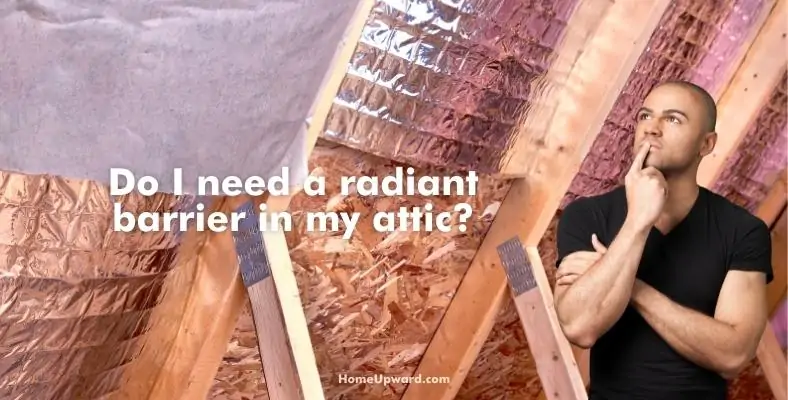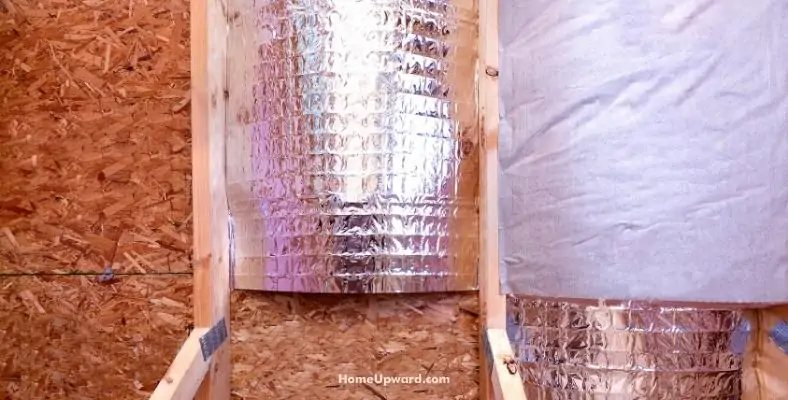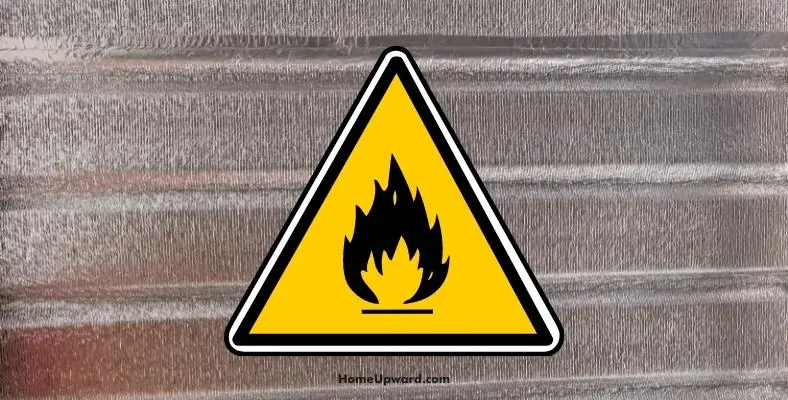Just like every form of insulation, there are radiant barrier attic pros and cons that you are helpful to know before spending a dime. Read on to find out the ins and outs so you’ll be ready.
Contents
Attic Radiant Barrier Pros and Cons
Do Radiant Barriers Work in Attics?
The quick answer is that, yes they do work! Radiant barriers are a good addition to your attic as they help reduce the amount of heat transferred into your home from the roof.
This helps save energy and makes it easier to be comfortable as they help keep your home cool by reducing outside heat that’s conducted through the attic to other surfaces. Studies have shown a reduction in cooling costs of up to 10%.
However, be aware that if you live in a cooler climate you’re likely better off installing more thermal insulation instead.
How does a radiant barrier work?
Radiant barriers are made of a highly reflective material (usually aluminum foil) which is layred alongside other materials like plastic film, thick paper, pressed cardboard, and an air barrier material as well. Radiant barriers help prevent your home warming up more by two methods:
- Reflecting heat from the outside.
- Acting as a barrier or shield, if you will, which prevents heat transfer
Radiant heat travels in a direct, straight line and will heat anything else along the way that it’s close enough to. Even a small amount in a closed area (like an attic without much ventilation) will warm up over time.
It’s different from regular insulation such as foam, fiberglass insulation, or blown cellulose which absorbs heat instead.
Radiant Barrier Attic Pros and Cons To Know
Pros
- Radiant barriers are great for lowering your electricity bill because of their ability to prevent heat from entering your house, allowing for greater energy efficiency in warmer areas, too.
- They’re not prone to mold like other insulation materials because instead of being made of densely compacted material they’re just one layer of reflective material along with a few additional thin layers.
- They’re durable: The radiant barrier is aluminum foil or another similar material so it is less likely to break down the way cellulose insulation would.
Cons
- Since they work against heat and sun in warmer climates, if you live in a cooler climate you won’t get the same benefit. Other attic insulations would work better to keep your house warm in cold areas.
- Moisture from inside the house can accumulate on the radiant barrier foil if it collects on other surfaces from water droplets. (Moisture can lead to attic condensation which will cause issues like mold and wood rot.)
- The foil is susceptible to collecting dust over time and can trap moisture – it shouldn’t be used directly on top of attic floor insulation.
- Another common issue is needing additional insulation because radiant barriers don’t offer great insulation when it comes to heat transferring throughout the house. If you have cold seasons you’ll still need fiberglass or blown cellulose insulation.
- They conduct electricity. While it’s a bit unusual, it is possible to bring the foil surface of a barrier into contact with live electricity which can mean a shock hazard.
Do I Need a Radiant Barrier in my Attic?
Is Radiant Barrier Roof Sheathing Worth It?
Yes, if you live in an area where a radiant barrier works well, the savings on your electricity bill can more than make up for installation costs – especially over time. They’re also helpful for preventing your home from getting uncomfortably warm.
In some cases, the attic temperature can be reduced by a whopping 30 degrees Fahrenheit because as much as 97% of the sun’s energy can be blocked/reflected from reaching your attic.
How Long Does Radiant Barrier Insulation Last?
Radiant barrier insulation can last as long as 80-100 years when properly installed. There is always the possibility of damage from other causes but it should last a long time. They’re very durable and are installed away from most other attic materials or surfaces.
Is Spray Foam Better Than Radiant Barrier?
Spray foam insulation and radiant barrier insulation have two different functions, so it’s not a matter of which is “better” but which one is right for the task.
- Open celled spray foam insulation is effective at keeping your home warm in the winter and keeping your attic cooler during the summer. It doesn’t protect against radiant heat as the radiant barrier will.
- Radiant barrier insulation works to prevent hot outside temperatures and sunlight from warming your attic and transferring more heat into your home.
There are a few more differences to know as well:
- Spray foam is more expensive than a radiant barrier.
- You can usually install a radiant barrier yourself, though having a trained expert do it will leave less room for error, while spray foam requires an expert.
Is Radiant Barrier a Fire Hazard?
Radiant barriers are typically only fire hazards during storms – otherwise, they aren’t subject to fire or ignition. If struck by lightning it is possible the non-metal material portion can ignite and result in a fire in your attic space which then could spread to the rest of the house.






